The island of La Gomera is a viewpoint in itself.
For its intricate orography, it surprises in every curve, in every corner that you discover as you advance. Each place discovers a new geological formation, a small hamlet in the middle of a ravine surrounded by palm trees or an immense green mantle covering the place.
The island network of viewpoints is dotted with spectacular scenarios to peek into and discover the beauty of this island, which has been sculpted by wind and sea over the years.
La Gomera is an island to be seen and appreciated. Stopping at these viewpoints is one of the most incredible experiences you can live in this paradise. Dare to discover a network of viewpoints designed so that, in each of them, you become part of the landscape.
The hidden village of Agulo is the setting for the glass bay Abrante Viewpoint, but there are other majestic viewpoints in the area where you can appreciate the splendour of La Gomera.
At the highest point in the area you will find Lomo del Dinero Viewpoint, reached by taking the trail from the Laguna Grande crossroads to Garajonay National Park Visitors’ Centre. This viewpoint offers views over the striking highland forest above Meriga.
From the Roque Blanco Viewpoint you can marvel at one of the remotest parts of the island, the village of Teón, where you can find the finest stands of Canary Islands strawberry trees in La Gomera. The view also extends to the Vallehermoso Valley.
Many of the forests that you can see from these viewpoints, an amazing sight that you will carry in your memory, once served as a resource for the inhabitants of the island.
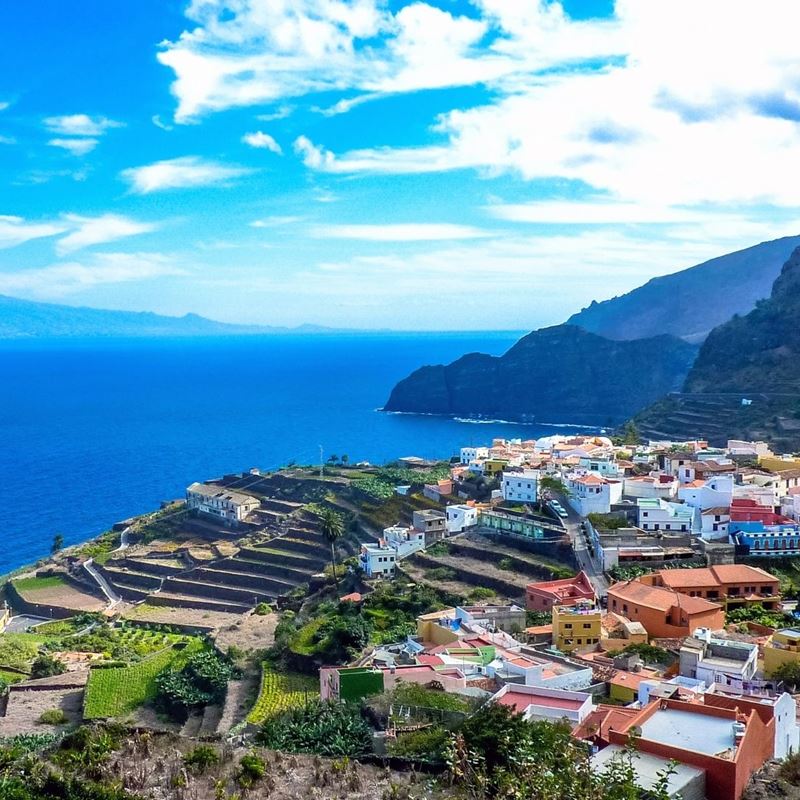
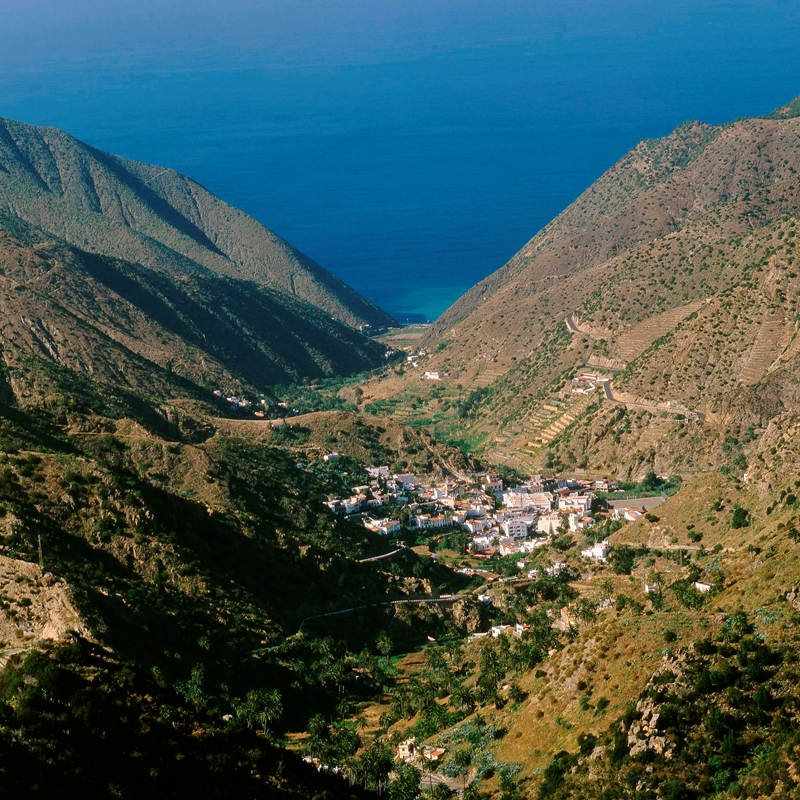
The viewpoints found in the Hermigua area boast of lush vegetation where dozens of native species grow freely.
La Punta Viewpoint is known as the "Enchanted Valley". In this small corner of La Gomera almost everything is located in "la punta". The small town of La Tosca is right on the edge of the current road and one of the largest banana plantations on the island, extends almost to the seashore. At the end of the beach, protected by the Montaña del Hueco, you can see the Punta de Hermigua, at whose feet you can see the pillars of the old davit.
La Carbonera Viewpoint is another exceptional spot from which to contemplate a green carpet of laurisiva, Fayal-Brezal and banana trees.
From San Juan Viewpoint, you will see how the hamlets follow each other and, if the clouds allow it, an incredible panoramic view of Mount Teide. When you stop here, follow the sight of the Hermigua Valley, from the high valley to the Pescante. Of course, the best monteverde of the archipelago offered by the Garajonay National Park awaits you.
Finally, El Rejo Viewpoints offer an exceptional view from the peaks to the bottom of the ravine, all seasoned with frequent vertical walls colonized by rupicolous vegetation.
The nine viewpoints in the San Sebastián area offer views with a palette of colours and contrasts that will amaze any visitor. Discover the dizzying landscapes and spectacular scenery they all offer.
The Lomada de Camello Viewpoint rewards visitors with a view of a good part of the Villa de San Sebastián, and on the sunniest days it also offers you one of the best panoramic views of Mount Teide.
La Laja Viewpoint located in the Degollada de Peraza, allows you to contemplate a good stretch of the La Laja ravine, the Roque de Iscagüe or the Chejelipes dam, fed by the waters that descend from the summit.
Do you know the monument to the Sacred Heart of Jesus? In La Gomera, it is known as El Cristo and it has been welcoming all those who arrive to the capital of the island for more than 50 years.
From the Sagrado Corazón (‘sacred heart’) Viewpoint, you have a bird’s eye view over the whole of San Sebastián, including the Port.
When you reach the Morro de Agando Viewpoint, you will find yourself surrounded by three protected natural spaces: Garajonay National Park, Los Roques Natural Monument and the Benchijigua Nature Reserve. Inevitably, your eyes will be directed towards the Roque de Agando, which is the undisputed protagonist of this panoramic view.

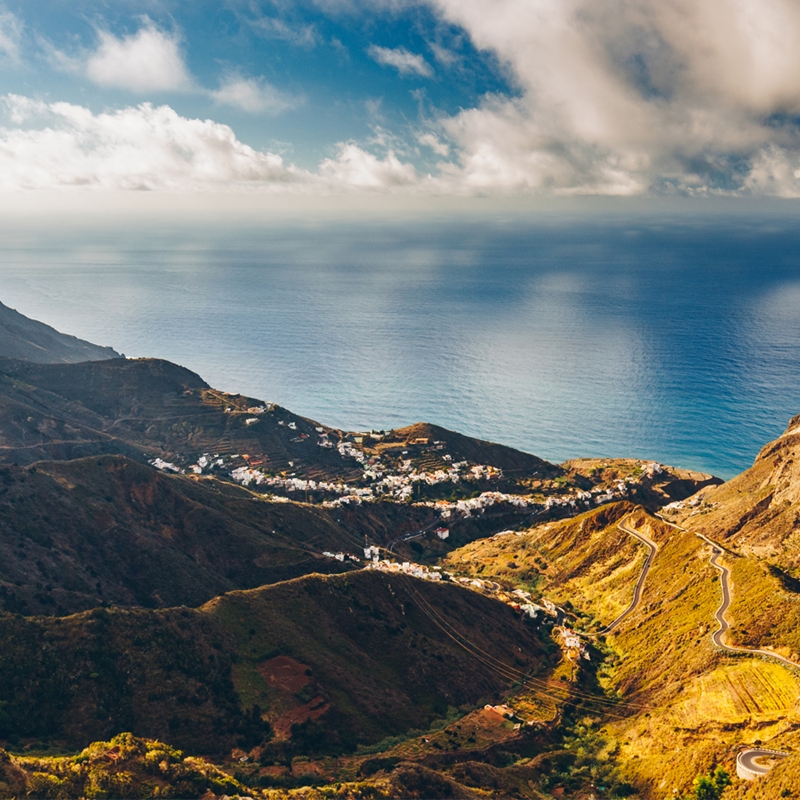
On the road connecting San Sebastián with the Hermigua Valley is the Los Manaderos Viewpoint, which offers fabulous views over La Laja Ravine, along which a series of four reservoirs collecting the waters that run down from the moisture-laden peaks. This water is used to irrigate farmland in the San Sebastián area.
The Tajaqué Viewpoint overlooks the Benchijigua Nature Reserve, with views of the hamlet of Benchijigua, Lomo de Gato Valley, and in the distance, the village of Pastrana. The arid landscape of this ravine contrasts with the lush green slopes of El Cedro Valley.
When you arrive at the Ayamosna Viewpoint, a magnificent panorama of San Sebastián, capital of La Gomera, opens before you, with the ravines of La Guancha and El Cabrito at your feet, both separated by a rocky ridge. Both valleys are part of the Canary Islands Network of Protected Natural Spaces.
And to round of our journey around the island’s network of viewpoints, we come to El Sombrero Viewpoint, located inside the El Cabrito Ravine Protected Natural Space. This ravine is dotted with palm trees, agave, prickly pear cactus, tabaiba shrubs and Canary Island spurge cactus, while the escarpments out of easy reach are home to endangered native species such as Limonium dendroides, a variety of sea lavender, and Cheirolophus falcisectus, a relative of the sunflower.
The rugged terrain of this area is typified by small hills covered with whimsical rock formations, among which are El Sombrero (‘the hat’), El Roque Blanco and the García and Magro formations.
On clear days, the Alto de Garajonay Viewpoint offers a magnificent gift for the senses, a panoramic view of practically the entire island of La Gomera. You can even make out the islands of El Hierro, La Palma and Tenerife. Like everything surrounding Mount Garajonay, this place has been shrouded with a halo of mystery since ancient times, given its strategic location. Proof of this are the remains of a sacrificial structure dating back to the original inhabitants of the island.
To the west of Garajonay National Park, on the Carretón Ridge, is Alojera Viewpoint, which offers a lovely view of the west coast of the island and the cliffs marking the boundary of the central plateau. It also overlooks the Alojera homestead, where the famous palm syrup is made.
Igualero Viewpoint, is considered to be the start and finish for many of the routes and trails around Mount Garajonay. It is the location of the monument to Silbo Gomero whistled language, and offers views of Mount Fortaleza de Chipude – which as the name fortaleza (‘fortress’) indicates, has the appearance of an unassailable fortress – and the erosion caldera of Mount Erques. The views extend from the summit of the mountain to the sea, taking in a wide area included inside the Orone Protected Landscape.
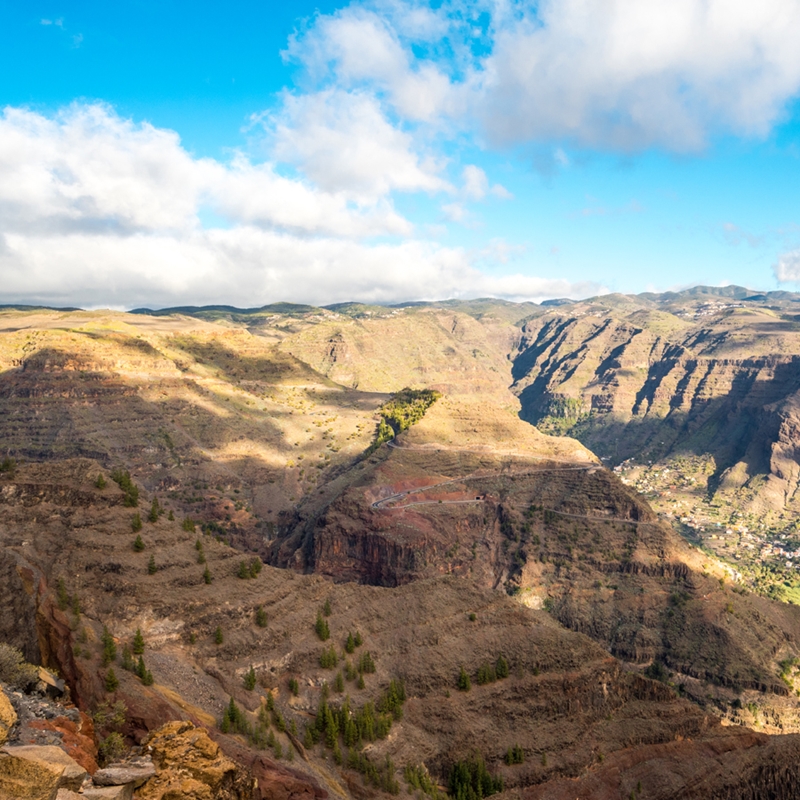
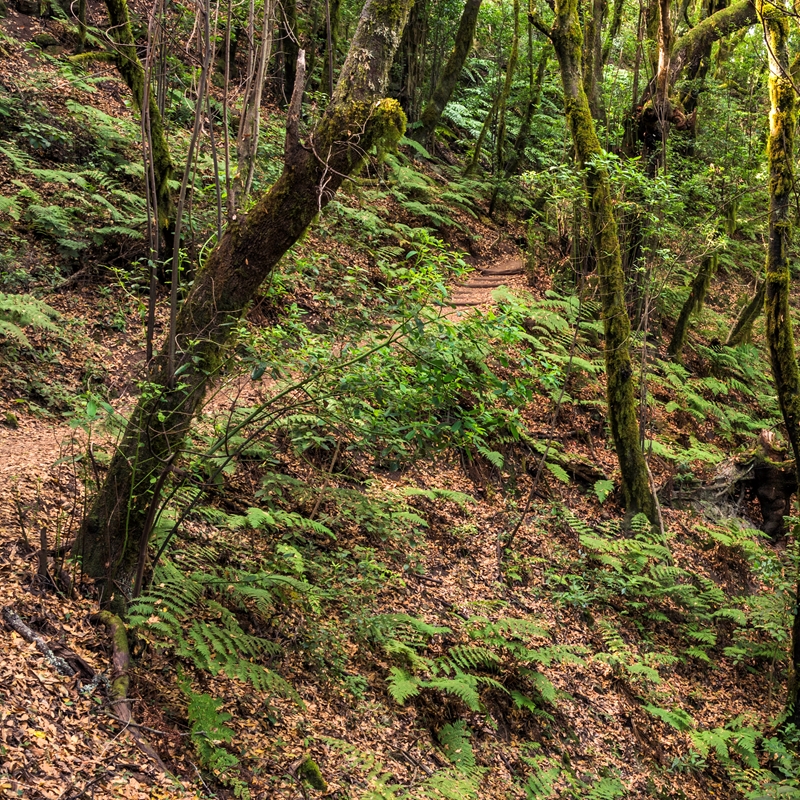
For incredible views over the pretty village of Vallehermoso, you will have to visit the Vallehermoso Viewpoint. At its feet are the northern part of the municipality and the mountains that give it shelter, as well as the Roque Cano Natural Monument.
For views over the whole of the Vallehermoso area you will need to continue to La Pilarica Viewpoint.
Both the Santa Clara Viewpoint and El Almendrillo Viewpoint offer stunning views over the steep-sided Arguamul Valley, allowing you to admire the striking beauty of the ravines that open onto the sea.
When you arrive at the Punta de Belete Viewpoint, you will be struck by the breath-taking view it offers of the Gran Rey Valley. There is no doubt you will be amazed by the grandeur of the steep rock walls that enclose a wide and fertile valley, the lower slopes of which have been carved into an impressive series of terraces. From here there is also a view of the picturesque homestead of El Cercado, an important site for the crafts of La Gomera.
Finally, La Degollada de Peraza Viewpoint, at 900 metres above sea level, offers fabulous views over the localities of Vegaipala, Jerduñe and El Cabrito towards the south, and of La Laja Ravine and of the village of Chejelípes and the reservoir named after it to the north side.
In the vicinity of La Degollada de Peraza is the cave where Hernán Peraza ‘the Younger’ – the lord of the island who ruled over the native Gomerans with great cruelty – died in 1488.